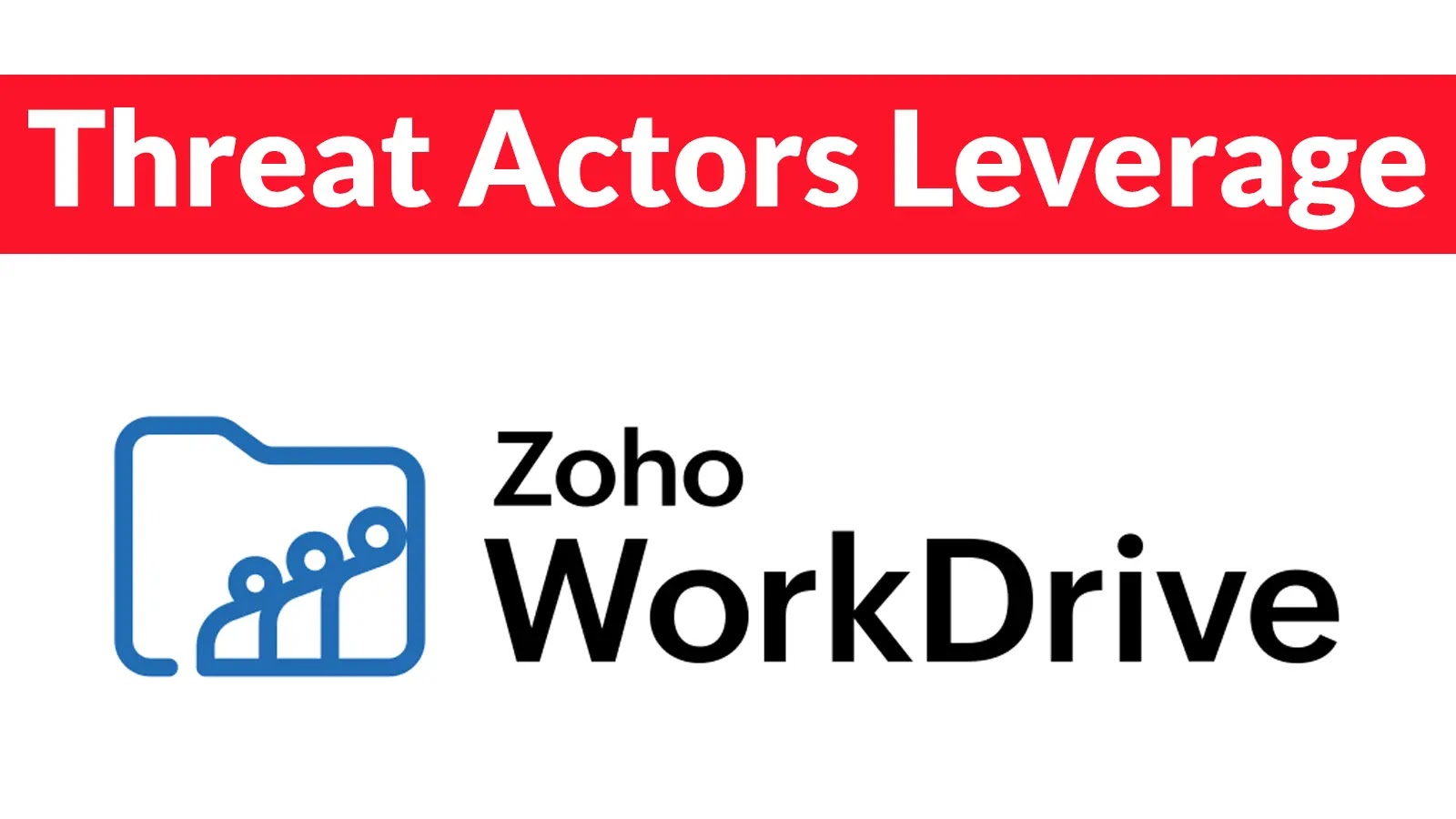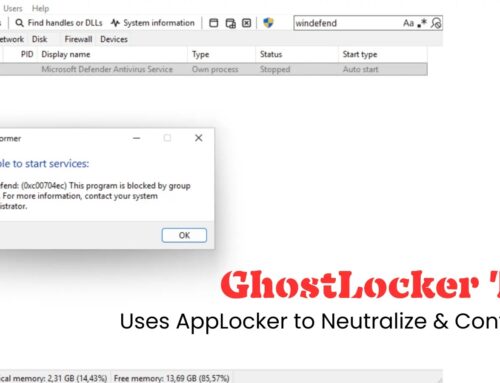
Threat Actors Leverage Zoho WorkDrive Folder to Deliver Obfuscated PureRAT Malware
The landscape of cyber threats is perpetually shifting, and the latest tactic employed by malicious actors highlights a disturbing trend: the subversion of legitimate cloud services to distribute sophisticated malware. This strategy allows threat actors to bypass traditional security perimeters, making detection significantly more challenging. A recent campaign, discovered in May 2025, perfectly illustrates this evolution, where a U.S. certified public accounting firm fell victim to an attack leveraging Zoho WorkDrive to deliver obfuscated PureRAT malware.
The Evolution of Malware Delivery: Trusting Legitimate Platforms
For too long, security professionals have focused on blocking malicious IPs and known bad domains. However, cybercriminals are increasingly adopting methods that exploit the very platforms organizations rely on for daily operations. Using legitimate cloud storage services like Zoho WorkDrive offers several advantages to threat actors:
- Evasion of Network Defenses: Traffic to and from well-known cloud services is typically whitelisted or less scrutinized by firewalls and intrusion prevention systems. This allows malicious payloads to traverse networks unimpeded.
- Reduced Suspicion: Users are accustomed to receiving and sharing files via trusted cloud platforms. A link from Zoho WorkDrive, for instance, might appear less suspicious than an attachment from an unknown sender or a link to an obscure file-sharing site.
- Scalability and Reach: Cloud services provide a robust, resilient infrastructure that threat actors can piggyback on, ensuring continuous availability of their malicious files.
This particular incident involving Zoho WorkDrive and PureRAT underscores a critical shift. Threat actors are no longer just exploiting software vulnerabilities (though those remain a concern). They are exploiting the inherent trust in legitimate services. While no specific CVE number is associated with Zoho WorkDrive’s exploitation in this context, it’s crucial to understand that the vulnerability lies not in the service itself, but in its misuse and the subsequent social engineering involved.
PureRAT: A Multi-Functional Threat
PureRAT is not a new player in the malware arena, but its continued use, often with obfuscation techniques, signifies its effectiveness for cybercriminals. As a Remote Access Trojan (RAT), PureRAT grants attackers extensive control over compromised systems. Its capabilities typically include:
- Remote Desktop Access: Allowing direct manipulation of the infected machine.
- File Management: Uploading, downloading, deleting, and executing files.
- Keylogging: Capturing keystrokes to steal credentials and sensitive information.
- Webcam and Microphone Access: Espionage capabilities.
- Credential Harvesting: Targeting browser saved passwords, email clients, and more.
- System Information Gathering: Collecting details about the host for further exploitation.
The obfuscation of PureRAT in this campaign made detection by traditional signature-based antivirus solutions more challenging, emphasizing the need for advanced behavioral analysis and threat intelligence.
Targeting Financial Services: Why Accounting Firms are Prime Targets
The choice of a certified public accounting firm as a target is not arbitrary. Organizations within the financial services sector, including accounting firms, are consistently high-value targets for several reasons:
- Sensitive Client Data: Accounting firms handle a treasure trove of financial, personal, and corporate data, making them lucrative targets for data theft and subsequent sale on dark web markets.
- Access to Financial Systems: Compromising an accounting firm could potentially lead to access to client financial accounts or facilitate fraudulent transactions.
- Intellectual Property & Business Intelligence: Financial records often contain proprietary business strategies, mergers and acquisitions information, and other sensitive insights that competitors or hostile states might find valuable.
- Ransomware Potential: The critical nature of financial data makes accounting firms highly susceptible to ransomware attacks, where business disruption can be catastrophic.
Remediation Actions and Proactive Defenses
Defending against sophisticated attacks that leverage trusted platforms requires a multi-layered approach that goes beyond traditional perimeter defenses.
- Enhanced Email and Web Security: Implement advanced email security gateways that can detect malicious links, even those pointing to legitimate cloud services, by analyzing destination content and sender reputation. Employ web filtering solutions that scrutinize downloads from cloud platforms for suspicious executables.
- Endpoint Detection and Response (EDR): Deploy EDR solutions that provide deep visibility into endpoint activity, enabling the detection of suspicious behaviors associated with RATs like PureRAT, even if initial delivery bypasses traditional antivirus.
- User Awareness Training: Conduct regular, rigorous training for all employees, emphasizing the dangers of clicking on unsolicited links, even those appearing to originate from trusted sources. Teach them to verify the legitimacy of requests, especially those involving file downloads.
- Least Privilege and Network Segmentation: Implement the principle of least privilege for user accounts and network access. Segment critical network resources to limit lateral movement in case a single endpoint is compromised.
- Regular Data Backups: Maintain robust, off-site, and immutable backups of all critical data. This is crucial for recovery in the event of a successful ransomware attack or data corruption.
- Threat Intelligence Integration: Subscribe to and integrate threat intelligence feeds into your security operations to stay updated on emerging attack methodologies and indicators of compromise (IoCs).
- Cloud Security Posture Management (CSPM): While Zoho WorkDrive itself isn’t inherently vulnerable here, understanding and maintaining strong security posture across all cloud services (misconfigurations, access controls) is vital.
Tools for Detection and Mitigation
| Tool Name | Purpose | Link |
|---|---|---|
| Cisco Umbrella | DNS-layer security, blocks access to malicious domains and IPs. | https://umbrella.cisco.com/ |
| CrowdStrike Falcon Insight | EDR for advanced threat detection and response. | https://www.crowdstrike.com/products/falcon-platform/falcon-insight-edr/ |
| Proofpoint Email Protection | Advanced email security gateway for threat detection, including malicious URLs. | https://www.proofpoint.com/us/products/email-protection |
| VirusTotal | Online service for analyzing suspicious files and URLs, checking against multiple AV engines. | https://www.virustotal.com/ |
| Tenable Nessus | Vulnerability scanner for identifying misconfigurations and software vulnerabilities. | https://www.tenable.com/products/nessus |
Conclusion: Adapting to the Evolving Threat Landscape
The attack on the accounting firm, using Zoho WorkDrive to deliver PureRAT, serves as a stark reminder that cyber defense must evolve beyond traditional static protections. Threat actors will continue to innovate, leveraging trust and legitimate infrastructure to achieve their objectives. Organizations must adopt a proactive, adaptive security posture, characterized by robust endpoint protection, comprehensive user education, secure cloud configurations, and intelligence-driven defenses. Understanding these evolving tactics is the first step in building resilient cybersecurity defenses for the future.





